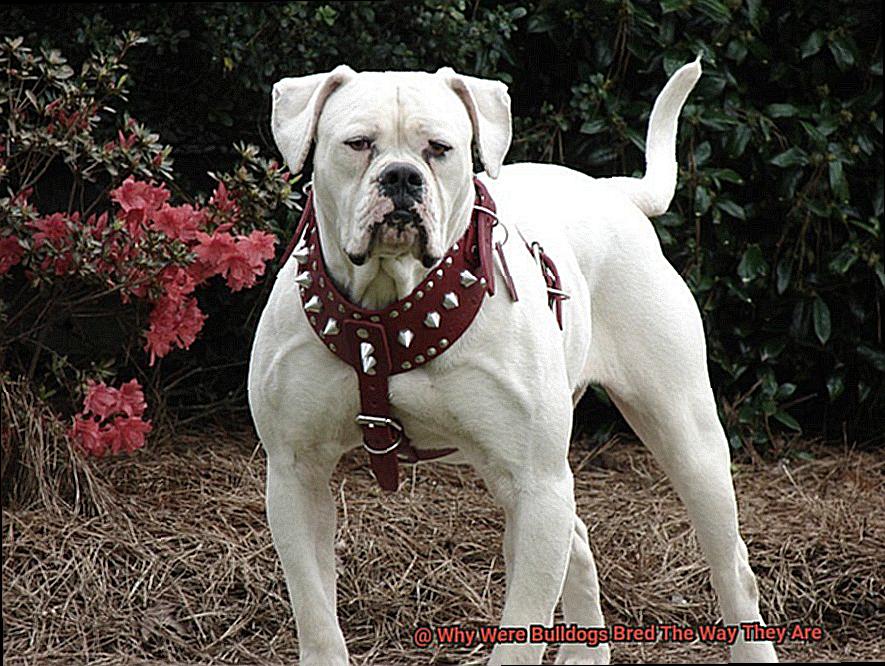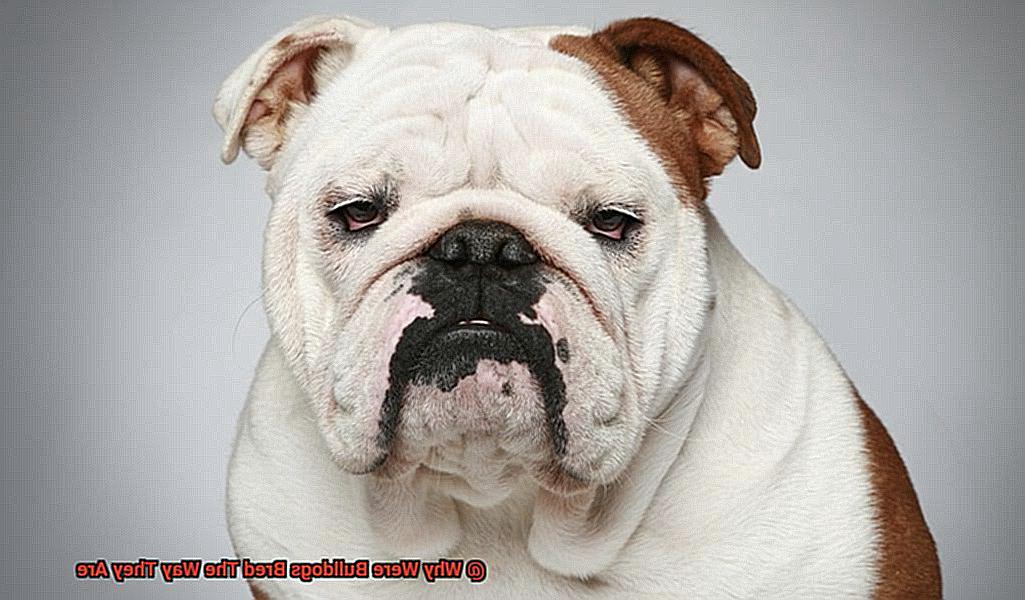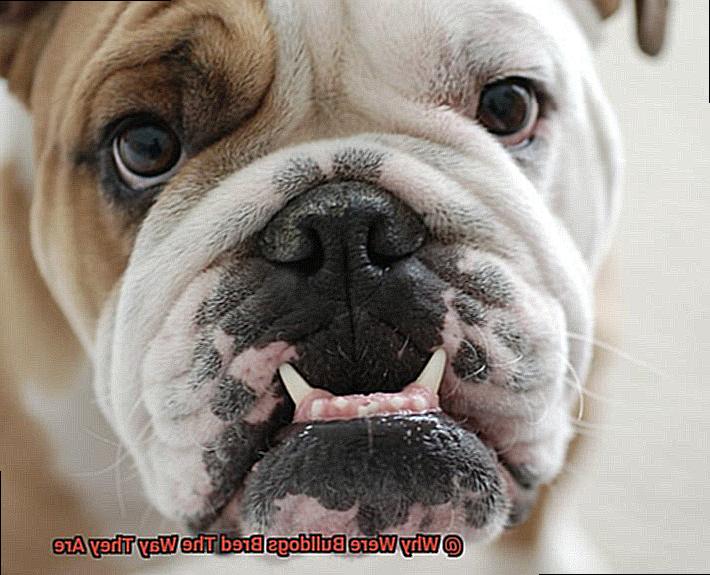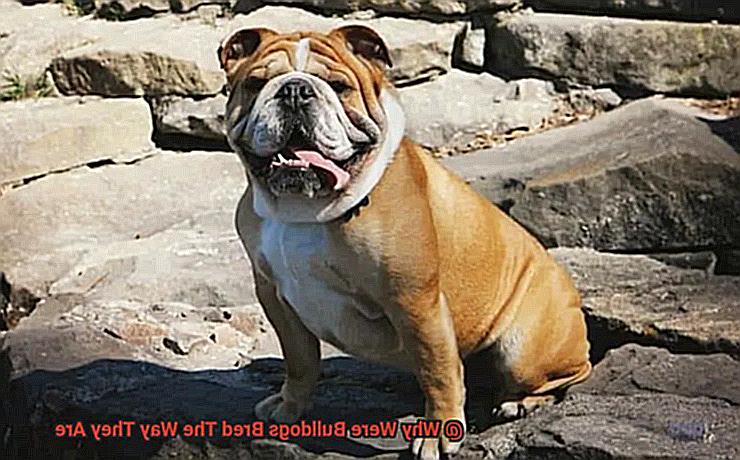Why Were Bulldogs Bred The Way They Are?
Get ready to dive into the captivating world of Bulldogs.
These charming canines have captured hearts around the world with their adorable wrinkles, stout bodies, and endearing personalities. But have you ever wondered why they were bred to look the way they do?
In this post, we’ll take a closer look at the history of Bulldogs and uncover the reasons behind their distinctive appearance and traits. From their origins as fierce bull-baiters to their current role as loyal companions, these dogs have a remarkable story to tell.
So grab a cup of tea and join us on a journey through time as we unravel the fascinating tale of how Bulldogs were bred into the beloved breed they are today.
Why Were Bulldogs Bred The Way They Are?
Contents
- 1 Why Were Bulldogs Bred The Way They Are?
- 2 Changing Attitudes and the Shift in Breeding Priorities
- 3 The Role of Crossbreeding in Creating Modern-Day Bulldogs
- 4 Physical Traits That Define the Bulldog Breed
- 5 Selective Breeding and Its Impact on Health Issues
- 6 The Enduring Popularity of Bulldogs as Companion Animals
- 7 Tips for Caring for Your Bulldog’s Unique Needs
- 8 Conclusion
From their wrinkled faces to their stocky bodies, Bulldogs have a unique appearance that sets them apart from other dog breeds. But what is the history and reasoning behind their specific breeding? Let’s take a closer look at the evolution of Bulldogs and how they have become the lovable breed we know today.
Origins in Bull-Baiting
Bulldogs were originally bred in England in the 1500s for the sport of bull-baiting. This violent blood sport involved releasing a bull into an arena and setting dogs on it to bring it down. Bulldogs were crossed with mastiffs and terriers to create a strong and aggressive breed that was well-suited for this purpose. Their muscular bodies, short wide heads, and powerful jaws gave them an advantage in gripping onto bulls. However, this cruel sport was eventually banned in 1835, leading to a decline in demand for Bulldogs.
Shift to Companion Animals
With the end of bull-baiting, Bulldogs faced near extinction. However, instead of disappearing, they were bred to be smaller and more docile for companionship. This shift in breeding was influenced by changing societal attitudes towards animal cruelty and the desire for a new type of dog that could fit into domestic life. The result was a more gentle and affectionate Bulldog that quickly gained popularity as a family pet.
Influence of Other Breeds
As Bulldogs continued to be bred as companion animals, they were crossed with other breeds to improve their physical qualities. In France, local breeds were used to create smaller Bulldogs with a more compact body, resulting in the French Bulldog we know today. Additionally, Pugs were also crossed with Bulldogs to create a more compact and shorter-faced breed, further contributing to the modern-day Bulldog’s appearance.
Desirable Physical Traits
The appearance of Bulldogs was also important in their breeding. Their wrinkles, flat faces, and stocky bodies were seen as desirable and unique to the breed. These traits were a result of the selective breeding that took place over generations, cementing the Bulldog’s iconic look.
Changing Attitudes and the Shift in Breeding Priorities
As a French Bulldog owner, you may have noticed that your furry friend looks much different from their ancestors. This is because the breeding priorities for bulldogs have shifted drastically over the years. In this section, we will explore how this shift has affected the appearance and temperament of bulldogs, and what it means for your beloved pet.
A Brief History: From Bull-Baiting to Companionship
Bulldogs were originally bred in 16th century England for the purpose of bull-baiting, a brutal sport where dogs would attack and bring down a bull. They were specifically bred for their muscular build and strong jaws, which made them ideal for this violent activity. However, as attitudes towards animal cruelty changed in the 19th century, bull-baiting was banned in England. This led to a shift in breeding priorities for bulldogs.
The Shift in Breeding Priorities
With bull-baiting no longer a popular activity, breeders started to focus on creating a more docile and friendly breed of bulldog. This led to the development of the modern-day bulldog, with its distinctive pushed-in face and gentle temperament. As breeders aimed for a more compact and stocky build, the bulldog’s appearance also changed significantly from its leaner and more athletic ancestors.
The Impact on Appearance and Temperament
This shift in breeding priorities also had an impact on the temperament of bulldogs. They were no longer bred for their fighting capabilities, but rather for their companionship and loyalty to humans. As a result, modern-day bulldogs are known for their friendly and affectionate nature, making them popular pets.
However, this change in breeding priorities has also led to health issues in bulldogs. The extreme features that make them unique, such as their short snouts and wrinkled faces, can cause breathing difficulties and skin problems. It is important for breeders to prioritize the health of bulldogs in addition to their appearance.
A Controversial Shift: From Function to Aesthetics
One of the factors that influenced this shift in breeding priorities was the growing popularity of dog shows in the 19th century. Breeders started to focus on creating a more aesthetically pleasing bulldog that would perform well in these shows. However, this has sparked controversy as some argue that breeders are prioritizing appearance over health when breeding bulldogs.
The Role of Crossbreeding in Creating Modern-Day Bulldogs
If you’re a proud owner of a French Bulldog, you might be wondering how this adorable and affectionate breed came to be. The answer lies in the fascinating history of crossbreeding that transformed Bulldogs from their original purpose as bull-baiting dogs to the lovable companions they are today.
Let’s take a closer look at how crossbreeding played a crucial role in shaping modern-day Bulldogs.
From Bull-Baiting to Ratting: The Start of Crossbreeding
Bulldogs were originally bred in England in the 1500s for bull-baiting, a barbaric sport where dogs would attack and overpower bulls. As you can imagine, this was not only cruel but also dangerous for the dogs. In an effort to create a smaller and more docile dog, breeders began to crossbreed Bulldogs with other breeds, such as terriers and pugs.
This crossbreeding not only resulted in a smaller size but also physical changes in the Bulldog, including a shorter snout, wider head, and overall stockier build. These traits made them better suited for ratting and guarding purposes rather than bull-baiting.
The French Connection: The Creation of the French Bulldog
In the mid-1800s, Bulldogs were brought to France by English lace workers, and the French began to breed them with local breeds. This led to the creation of the French Bulldog, with its distinct bat-like ears and smaller size.
Continued Crossbreeding Efforts: Achieving Specific Traits
Crossbreeding efforts for Bulldogs continued throughout the years, with different breeds being introduced to the bloodline to achieve specific physical and behavioral traits. For example, Dalmatians were added to improve coat colors, and Boxers were introduced to create a more muscular build.
The Birth of the Modern-Day Bulldog
In the early 1900s, English and French breeders joined forces to create the modern-day Bulldog. The goal was to create a smaller, more compact Bulldog that was suitable for indoor living rather than outdoor work. This led to the development of the English Bulldog we see today, with its distinct physical features such as a short snout, wrinkled face, and stout body.
Physical Traits That Define the Bulldog Breed
If you’re a proud French Bulldog owner, you may have noticed that your furry friend has some distinct physical features. From their large heads and strong jaws to their wrinkled faces and stocky bodies, Bulldogs are easily recognizable and have become a beloved breed among dog lovers. But have you ever wondered why they look the way they do?
To understand the evolution of physical traits in Bulldogs, we must go back to their origins in 16th century England. These dogs were bred for the cruel sport of bull-baiting, where they would attack and bring down bulls tied to a stake. Their strong jaws were essential for this task, as they needed to grip onto the bull’s nose and not let go.
To excel in bull-baiting, Bulldogs were bred to have a low-slung and stocky body with a wide chest and short legs. This gave them the agility and strength needed to take down a bull. Their large, wrinkled faces also served a purpose as it helped protect their face from injuries during fights.
However, as bull-baiting was outlawed in the early 19th century, Bulldogs were no longer needed for that purpose. But they were still popular among working-class people as guard dogs and companions. With this change in their role, breeders began to focus on creating a more docile and friendly temperament in Bulldogs. This led to changes in their physical characteristics, with shorter muzzles and smaller heads becoming more desirable.
Today’s Bulldogs still retain some of their original physical traits, but they have been significantly altered through selective breeding. While they may no longer be used for bull-baiting, these features are what make them easily recognizable as Bulldogs.
However, it’s important to note that these physical traits can also lead to health issues for Bulldogs. Their short muzzles can make it difficult for them to breathe, and their stocky bodies can make them prone to joint issues and obesity. This has led to discussions about how to breed healthier Bulldogs while still maintaining their distinctive physical traits.
Selective Breeding and Its Impact on Health Issues
The history of Bulldogs dates back to 16th century England, where they were bred for the cruel sport of bull-baiting. In order to excel in this activity, Bulldogs needed to have strong and muscular bodies, short snouts, and powerful jaws. However, with the banning of bull-baiting in 1835, the purpose of breeding Bulldogs shifted towards creating a more docile and companionable breed.
This change in breeding goals led to crossing Bulldogs with other breeds such as terriers and pugs, resulting in a shorter snout and rounder head. Selective breeding also led to other changes in physical traits, including a wider chest, shorter legs, and a more compact body. While these changes may have made French Bulldogs more suitable as pets, they have also brought about a range of health issues.

Bulldog Health Concerns
One of the most common health issues in French Bulldogs is their shortened snouts and narrower airways, which can make it difficult for them to breathe properly. This can lead to respiratory problems such as brachycephalic airway syndrome and can even be life-threatening in extreme cases. Additionally, their large heads and narrow pelvic structure can cause birthing difficulties in females, often requiring caesarean sections.
The compact body structure of French Bulldogs also makes them prone to joint problems such as hip dysplasia and back issues. Their wrinkled skin can also lead to skin infections if not properly cared for. Furthermore, the selective breeding for certain physical traits has also resulted in an increasing number of genetic health issues within the breed, including eye problems and heart conditions.
The Enduring Popularity of Bulldogs as Companion Animals
As a proud French bulldog owner, I can personally attest to the enduring popularity of these adorable furry companions. Despite changing trends and preferences, bulldogs have remained a beloved choice for many families and individuals. But what exactly makes them such an enduring favorite? Let’s take a closer look at the reasons why French bulldogs continue to reign supreme as companion animals.
Unique Physical Characteristics
One cannot deny the distinct appearance of French bulldogs with their stocky bodies, wrinkled faces, and pushed-in noses. These physical features were intentionally bred to give them the strength and determination needed for bull baiting. However, these same features also make them endearing to owners today, as they exude a unique charm and personality that sets them apart from other breeds.
Lovable Personalities
Despite being bred for a violent sport in the past, French bulldogs are known for their gentle and affectionate nature towards their owners. This makes them great family pets, as they are loyal and protective of their loved ones. Their friendly and playful demeanor also makes them great companions for children.
Perfect for Different Living Situations

French bulldogs are also incredibly adaptable to different living situations. They can thrive in small apartments or large homes, making them suitable for both city dwellers and suburban families. Their low energy levels also make them great indoor pets, as they are content with lounging on the couch with their owners.
Low Maintenance Needs
As busy individuals or families, we may not always have the time or energy for high-maintenance pets. This is where French bulldogs shine – they are relatively low maintenance in terms of grooming and exercise needs. Their short and smooth coats require minimal brushing and they do not need excessive amounts of physical activity.
Long Lifespan
Compared to other breeds, French bulldogs have a longer lifespan, averaging from 8-10 years. This means that they can provide companionship for many years, making them a beloved member of the family.
Adaptability to Different Climates

French bulldogs are also adaptable to different climates. They do well in both warm and cold weather, making them suitable for various geographical locations.
Community of Dedicated Owners
Last but not least, French bulldogs have a strong community of dedicated owners who share their love for the breed. This creates a supportive network for owners to connect and exchange information about the care and training of their beloved pets.
Tips for Caring for Your Bulldog’s Unique Needs
Bulldogs are one of the most recognizable dog breeds, with their wrinkled faces, stocky bodies, and sweet personalities. But have you ever wondered why they look the way they do? As an expert on caring for bulldogs, I am here to share with you the fascinating history of this beloved breed and how their breeding has influenced their unique physical characteristics and potential health issues.
Bulldogs have a long and storied history, dating back to 15th century England. They were originally bred for the brutal sport of bull-baiting, where dogs would attack and subdue bulls for entertainment. This required them to have a strong, muscular build, powerful jaws, and a low center of gravity to withstand the bull’s attacks. However, when bull-baiting was banned in the early 19th century, bulldogs faced extinction as they no longer served a purpose.
Thankfully, many breeders saw the potential in bulldogs as companion dogs and began breeding them for their friendly and loyal nature. This led to the development of the modern bulldog we know today, with a more gentle and docile temperament compared to their aggressive ancestors. However, this selective breeding also resulted in some health issues for bulldogs.
Due to their short snouts and flat faces, bulldogs are prone to respiratory problems and overheating. Their large heads and broad chests also make natural birth difficult for female bulldogs, leading to the need for caesarean sections. As an expert, I want to provide tips for owners on how to care for these unique needs and prevent potential health issues.
Firstly, it is important to understand that bulldogs require low levels of exercise compared to other breeds. Short walks and indoor playtime are sufficient for keeping them physically active without risking overexertion. Overheating can be harmful to their health, so it’s crucial to avoid exercising them in extreme temperatures.
Next, their diet is a crucial aspect of caring for bulldogs. Due to their tendency towards obesity, it is essential to monitor their food intake and provide a balanced and nutritious diet. Avoid overfeeding or giving them foods that are high in fat and calories. A high-quality diet specifically designed for bulldogs is recommended.
Regular grooming is also necessary for bulldogs, as their wrinkled skin and folds can trap dirt and bacteria, leading to skin infections. Cleaning their wrinkles with a damp cloth and using a mild, hypoallergenic shampoo can prevent these issues. It is also essential to clean their ears regularly, as they are prone to ear infections.
Finally, regular vet check-ups are crucial for bulldogs. Due to their predisposition to certain health issues, it is essential to stay on top of their medical care and address any potential problems early on. As an expert, I have seen firsthand the importance of preventive care for Bulldogs.
Also Read: What Fruit Can French Bulldogs Not Eat
Conclusion
In summary, Bulldogs have a fascinating past that has shaped them into the beloved and distinctive breed we know today. From their origins as fierce bull-baiters to their current role as devoted companions, these dogs have undergone significant transformations through selective breeding. The deliberate breeding has resulted in their iconic physical features and traits, but it has also brought about some health concerns.
As responsible pet owners, it is imperative to understand and cater to the specific needs of Bulldogs. Regular exercise, a well-balanced diet, proper grooming, and routine vet check-ups are crucial for maintaining their overall well-being. Despite potential health challenges, French Bulldogs continue to hold a special place in our hearts as cherished pets due to their endearing personalities and adaptability.
So the next time you encounter a Bulldog with its wrinkled face and stout body, take a moment to appreciate the captivating history behind its unique appearance. And if you are fortunate enough to have one in your life, be sure to shower them with all the love and care they deserve.




